Playing with fire
‘Pippin’ backstage crew reflects on the importance of coordination, safety in a heated environment
As he overlooks the rest of his fellow actors, sophomore Ivy Speight, the understudy actor for Pippin, also finds at his feet a wagon of actual fire, the first pyrotechnical set piece ever utilized in a MacTheatre production.
February 9, 2023
It’s not often that one intentionally sets something ablaze on school grounds, and it’s neigh-unheard of for the culprit to be paid to do so, but that’s exactly what happened during Pippin, the big-budget spring musical, which is fresh off its two-week run.
The whole point is through the beginning, it’s supposed to be make-believe and illusion and glamour, until things turn really seriously real at the end.
— Kristin Vandenberg
Technical director Kristin Vandenberg, who oversees all aspects of the play’s production, has discovered and curated a multitude of interesting ways to shift between the story’s comical and dramatic scenes.
“Pippin is a lot of fun because it’s kind of a band of players putting on a show,” Vandenberg said. “So the whole point is through the beginning, it’s supposed to be make-believe and illusion and glamour, until things turn really seriously real at the end.”
The peak of Pippin’s drama and tension, of course, comes at the climax, at which point the first use of live fire effects in MacTheatre history was unveiled. According to Vandenberg, when employing this unfamiliar technology, caution is key.
“Like I said, it gets very, very real,” Vandenberg said. “We have fire permits from the City of Austin for live flame effects. Everything’s being inspected by them, even though we built it all on-site. Everything is being fully inspected, and it’s all being run by adults.”
Despite being constructed under the express intention of never being operated by student technicians, that hasn’t stopped many working backstage from being very excited to see this impressive set piece through to its execution, such as senior assistant stage manager Tyler Mankinen.
“Most schools who perform Pippin have a fake fire set piece, so I feel that makes our production more unique,” Mankinen said.
Even though they didn’t directly interact with the pyrotechnical elements of the show, the job of Mankinen and the other stage managers was to ensure that what was intended for entertainment did not become a disaster for one of the actors.
“[In this position] you are the bridge between the actors, technicians, directors, pit orchestra, and everyone in between, so the communication aspect is crucial,” Mankinen said. “Also, safety is something unique to the assistant stage manager because you have to make sure everything happening on stage is occurring in an organized and safe fashion to keep the cast and crew safe.”
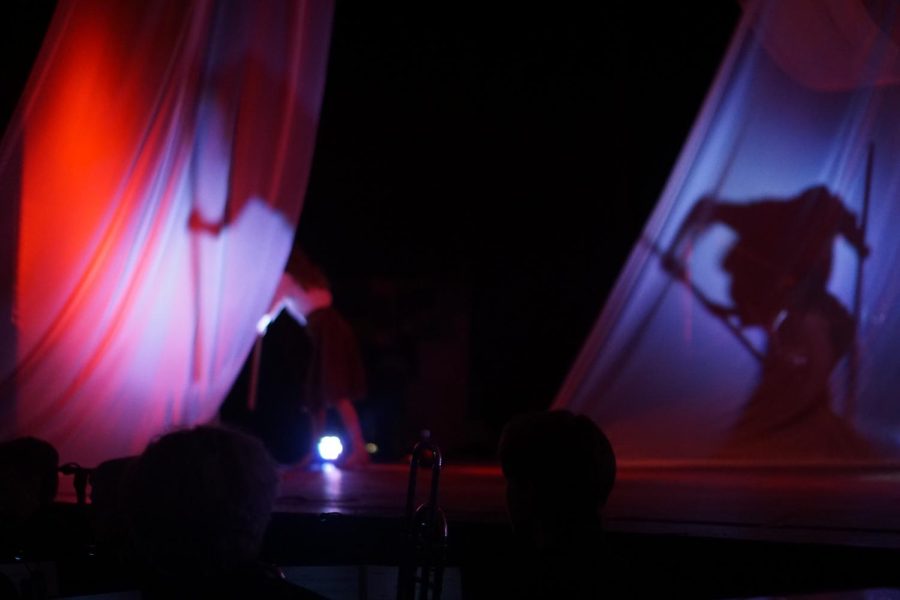
Mankinen’s job entails a lot of relaying information to others, and junior stage manager Zoe Gravois exercises a similar control over the actions of everyone working on and off stage in order to keep all proceedings in sync.
“I don’t exactly direct the actors, but I manage them,” Gravois said. “I make sure that they’re on task and working and that we get started on time and that everything’s ready; I speak to the stage, send out rehearsal reports that say everything we do and what we’re doing tomorrow.”
Staying in contact with all members of the production and acting teams via email is not nearly as intensive, however, as managing the cues for nearly everything that gets shifted into place during the actual shows. Gravois speaks through channels during the live performances for when lighting, set pieces or even background elements need to be changed. This responsibility, of course, means that she was also in charge of letting the proper people know when it was time to bring the heat.
“I’m really excited to cue the fire,” Gravois said. “We have real fire for this show, and that’s not normally something we get to do, so it’s pretty exciting.”
[Lighting] is interesting how it works and also what it can accomplish. Lighting can act like scenery and create a setting and it also changes the tone of the scene.
— junior Naomi Pearson
Nevertheless, the flames were only one of the technical elements being put on display for Pippin. Many others also carried the task of devising creative methods of relaying the story’s environments and atmosphere to the audience. For example, the way that the musical utilizes curtains and shadows has been something that junior assistant lighting designer Naomi Pearson was happy to finally reveal.
“I really love the silhouettes we create with the curtains during ‘Glory,'” Pearson said. “It’s beautiful and just the best use of them throughout the show. I mainly do lighting—I like it because it is interesting how it works and also what it can accomplish. Lighting can act like scenery and create a setting, and it also changes the tone of the scene.”
While lighting can function as a dynamic way to bring life to a moment, Pippin also relies upon more classical props and backgrounds, the construction of which has been overseen by senior scenic head Ruby Cloke, who has enjoyed watching the whole production’s assembly, piece by piece.
“I really like seeing the musical or play from a different perspective other than the audience and seeing it, how it’s put together and how it’s run,” Cloke said.
With his eagerness to show off what has been built for this latest show, Cloke also recognizes the importance of keeping order and clarity in a fast-paced situation.
I really like seeing the musical or play from a different perspective other than the audience and seeing it, how it’s put together, and how it’s run.
— senior Ruby Cloke
“[Communication] is a huge thing,” Cloke said. “For my position during the show, I’m flying giant set pieces above people’s heads, and if I don’t know when or where people are, there’s a chance that I would hit them and severely injure them.”
Technical director Vandenberg explains that although performing Pippin in the MAC theater opens up greater opportunities for more impressive effects and scenery, with these upsides comes the much larger responsibility of managing all the moving parts.
“Here, it’s a lot easier to do spectacle,” Vandenberg said. “Everyone sees the whole vast space, and they can see effects through the whole area. It’s a bigger space to fill with people, with sets, with lights. But it gives you that opportunity for bigger pictures, I guess.”
Coordinating the efforts of something with this large of a scale and with this many people is no meager task. Despite the challenge, though, the managers and directors of MacTheatre are well aware that no matter how intense the heat becomes, they must, above all else, keep their cool.



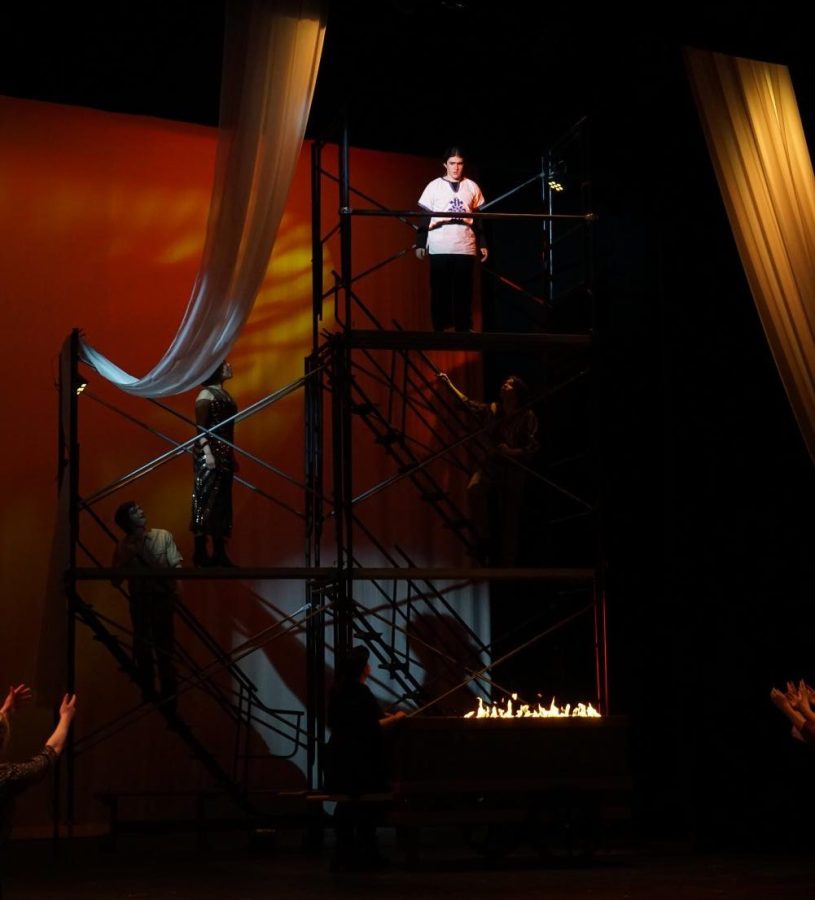
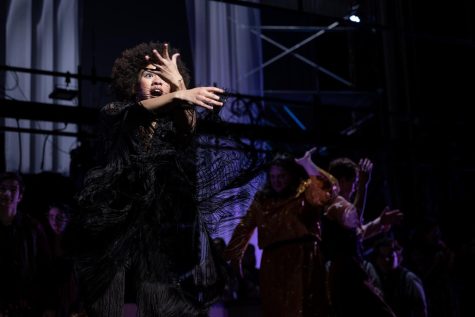
![JUMPING AROUND : As sophomore Finn Griffith (Joseph) performs “Joseph’s Coat,” Marshall Clifton (front and center) plays Gad, one of Joseph’s brothers. who holds up the coat during the song. Clifton’s role as a swing was to step in to perform if any actors were missing. “Getting this opportunity to hop in and out of different roles was amazing,” Clifton said. Joseph was his third musical. “I’m pretty new to musical theatre,” they said. ”While this was definitely a lot of work, I am so glad I [had] this opportunity.” Reporting by Cassidy Levin.](https://macshieldonline.com/wp-content/uploads/2022/02/51849012688_e19245d93d_c-475x317.jpg)
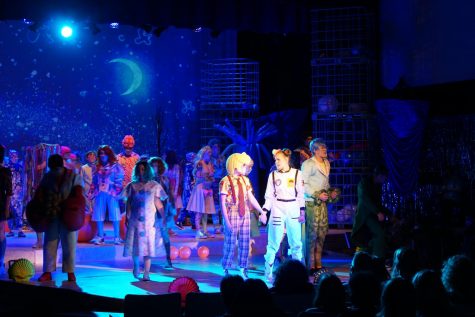
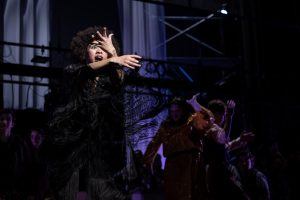
![JUMPING AROUND : As sophomore Finn Griffith (Joseph) performs “Joseph’s Coat,” Marshall Clifton (front and center) plays Gad, one of Joseph’s brothers. who holds up the coat during the song. Clifton’s role as a swing was to step in to perform if any actors were missing. “Getting this opportunity to hop in and out of different roles was amazing,” Clifton said. Joseph was his third musical. “I’m pretty new to musical theatre,” they said. ”While this was definitely a lot of work, I am so glad I [had] this opportunity.” Reporting by Cassidy Levin.](https://macshieldonline.com/wp-content/uploads/2022/02/51849012688_e19245d93d_c-300x200.jpg)











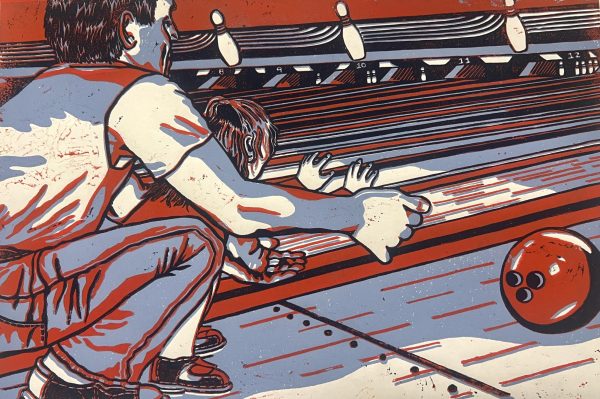

Dashiell Carmical • Feb 15, 2023 at 11:59 am
I think that this post really does its job at making people want to read the story. the image the title everything about the first glance makes you want to read it.